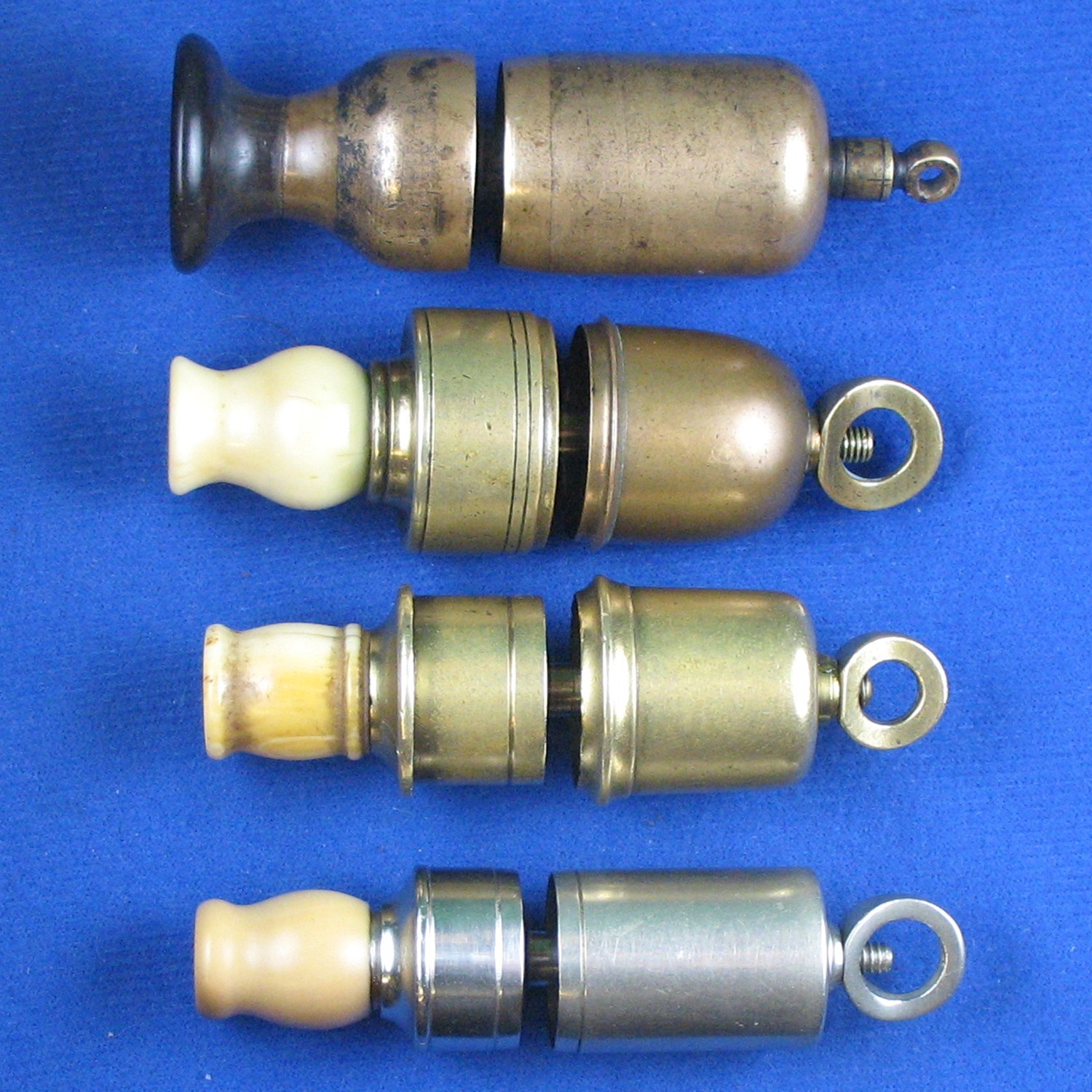Windows —
A window as related to a whistle, is the opening in which air is blown through the mouthpiece and thereby exiting the whistle body. For this to be accomplished in some whistles this air hits and is spread by a diffuser, whether this is a wedge ( conical whistles ), a disc ( tube shaped ), a barrel ( escargots ). However in other whistle designs it is bypassed, for example boatswain whistles use a direct approach to the window edge from a tube, round whistles over a fipple, escargots through a flat mouthpiece. The variety is innovative and endless.
In this action sound waves created are affected by many variables, including the force of air, the body, material, temperature and for our special consideration, the direction of the air because of the diffuser working in conjunction of the window design.
Typically, windows in a whistle body vary between 1,2,3, or 4 openings that lay just past the mouthpiece entry, working in conjunction with the air blown through the mouthpiece and all the way through and across the windows exiting edge.
Whistle Bodies —
Round whistles and certain tube shaped whistles utilize a single window opening. If we are looking at tube shaped whistles specifically, there usually are two or more windows and again on exiting, the air it is cut by the simple window width edges, limited to whatever degree by the width of the window is and the body size. Accordingly, there may be multiple windows of oval, round, half moon, square or even triangular shapes, nevertheless with separate single window edges per window opening.
Beaufort shaped or more accurately conical whistles ( of which there is more variety ) follow the same mechanics, albeit with round windows. Therefore, in using this configuration through this avenue, the air passes by a wedge or disc and is simply cut by the opposite window edge.
Escargots ( snail shaped ) whistles bypass this flow, as they are unrestricted to the simple straightforward cutting edge opposite the ‘squared off’ mouth and amplified by the barrel vortex . Boson whistles/pipes likewise use a buoy ( bowl ) at the end of a pipe and here again incorporates a vortex and that opposing edge . Exceptions may be searched for and yet we find most follow this pattern of a mouthpiece, diffusion, exiting — in line with a limited openings.
***What can we conclude so far ?? That the exiting air is subjected to restrictions in air flow and sound quality by diffusion and ‘sectional’ windows. In this SPOTLIGHT focus is brought to the mechanics of the circumferential or a ‘360 degree window’, diffusion into a complete window with no breaks. Included will be discussed windows with semi-complete diffusion and windows.
Background —
The earliest use of this feature of a circumferential window in a manufactured metal whistle is the steam whistle, perhaps 1830s, which eventually gave rise to the hand held/blown bell whistle ( circa 1865 ) designed by Richard Porteous ( manufactured by Stevens railway supply company ). The bell whistle is the primary example of a circumferential 360 degree whistle window.
Perhaps he was refining this concept in his earliest tube-shaped whistles, circa 1850. These earliest tube-shaped whistles were machined in such a way that the mouthpiece and the diffusing ‘disc’ was integral. The edge of the disc top of the machined mouthpiece was indeed 360 degrees, but the supports (2) restricted air flow as seen in the pictures below. This almost drove the air around the ‘disc’ and out the windows, yet was inhibited by two ‘stand-offs’.
Why is refining is stated ?? In the case that the windows were incomplete of 360 degrees. At the same time, there was no partition employed to also divide the sound. Only the earliest Porteous whistle ( maker unknown ), Stevens & Son whistles, Hudson are known at this time to have left out partitions. — SEE CPWs pages 6, 48, 58
This was prior to the development of dual tone tube shaped whistles, which subsequently dominated the market. These overlapped for a small period manufacturing tube-shaped whistles with and without partitions. Consequently, whistles made with no partition had but one sound rather than the dissonant dual note tones that would follow with ‘partition’ whistles. It is significant that in this progression, the deep hollow sound quality that could be brought forth with a single longer tube, would be lost until F.L. Johnson would re-capture it by about 1885. Only a scant few would bring back this design and sound. F.L. Johnson, F.J. Hall, and one other unidentified manufacturer.
This timeline for circumferential windows includes whistles with no partition wall :
- 1850 –1860 — Porteous Whistle, tube shape ( large, no partition ) – 340-360 degrees
- 1865 — ?? — Bell Whistle – 360 degrees
- 1865 – 1875 ?? — Stevens, Porteous whistles ( medium, no partition ) – 340 degrees
- 1885 — 1900 – F.L. Johnson, dual tube – 340 – stamped for 1885 ? – patented 1889
- 1885 – 1900 — F.L. Johnson, tube shape – ( long )360 degrees – patent 1889
- 1890 –1900 – A.P. Hatch – 360 degrees ( medium length ) – 360 degrees
*** Johnson whistles were made by Hatch Manufacturing starting at least by 1890.
For the true edge of a complete 360 degrees to be taken advantage of, the body must be connected to the mouthpiece in such a way that the end ‘floats’ completely away from the mouthpiece. This is accomplished with bell whistles by integrating a post down the middle. Then a disc ( diffuser ) could direct the air completely around the window edge of 360 degrees.
On the other hand, Johnson’s patented design attached the tube with ‘stays’ (arched rods) located on the outside perimeterand arching out of the air flow in this process standing the tube mouthpiece off from that opposite edge. At the same time, he attached the disc completely away from inside the mouthpiece with a single soldered metal rod to achieve the full 360 degree sound effect. The inhibiters would be that small rod inside the mouthpiece and the four ‘stays’ close to the window edge.
This was almost achieved with early tube-shaped whistles by excluding a partition wall, at the same time extending two parts of the body wall on the perimeter, making the windows as wide as possible. The internal disc was attached just under the tube extensions to minimize interference with the air exhaust, therefore utilizing perhaps 340 degrees of window edge. However, this made the whistle structurally weak at these two points which is reflected when finding whistles with the mouthpiece bent thereafter.
Various other window examples:
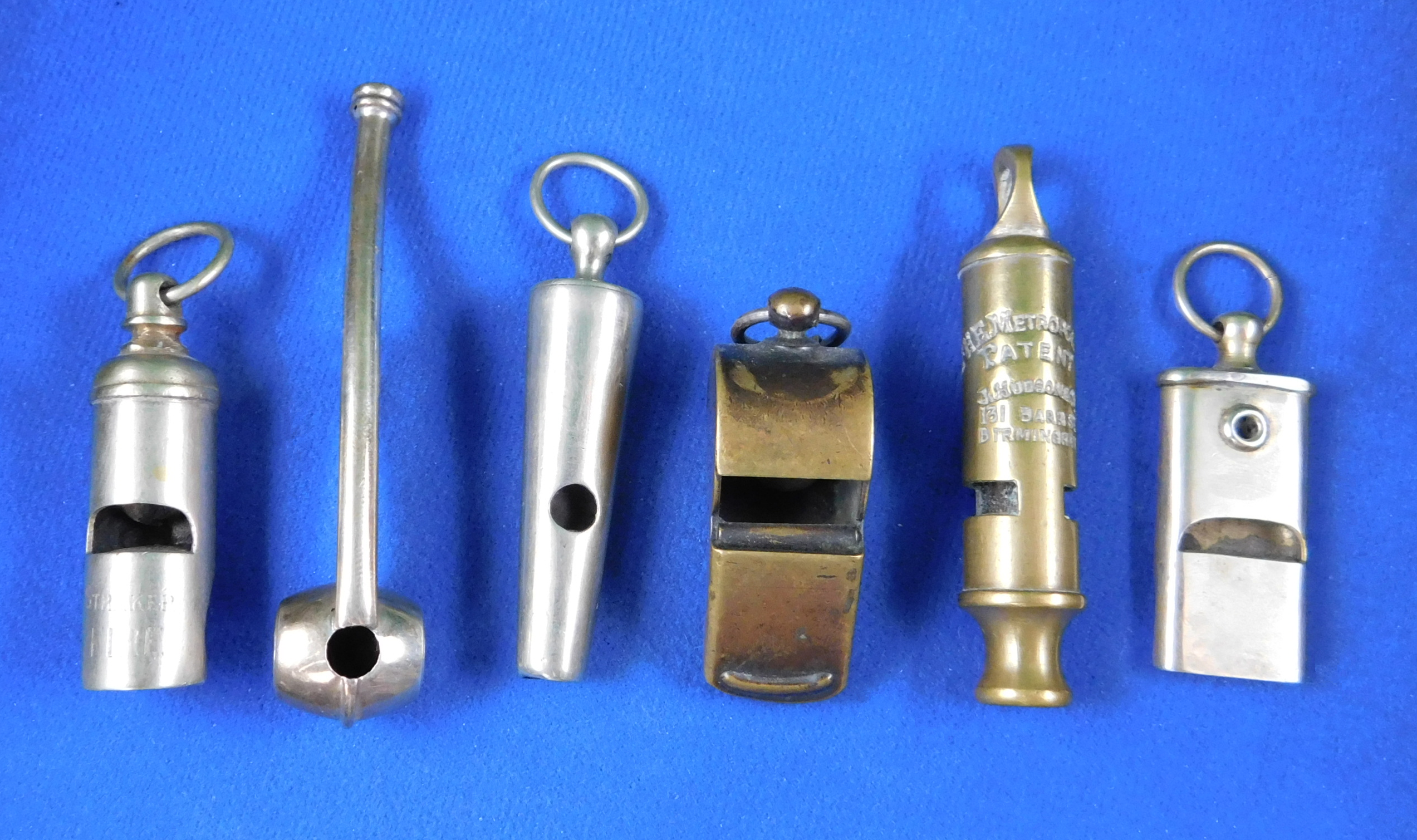
So let’s examine full 360 degree windows first in Bell Whistles and one innovative late comer.
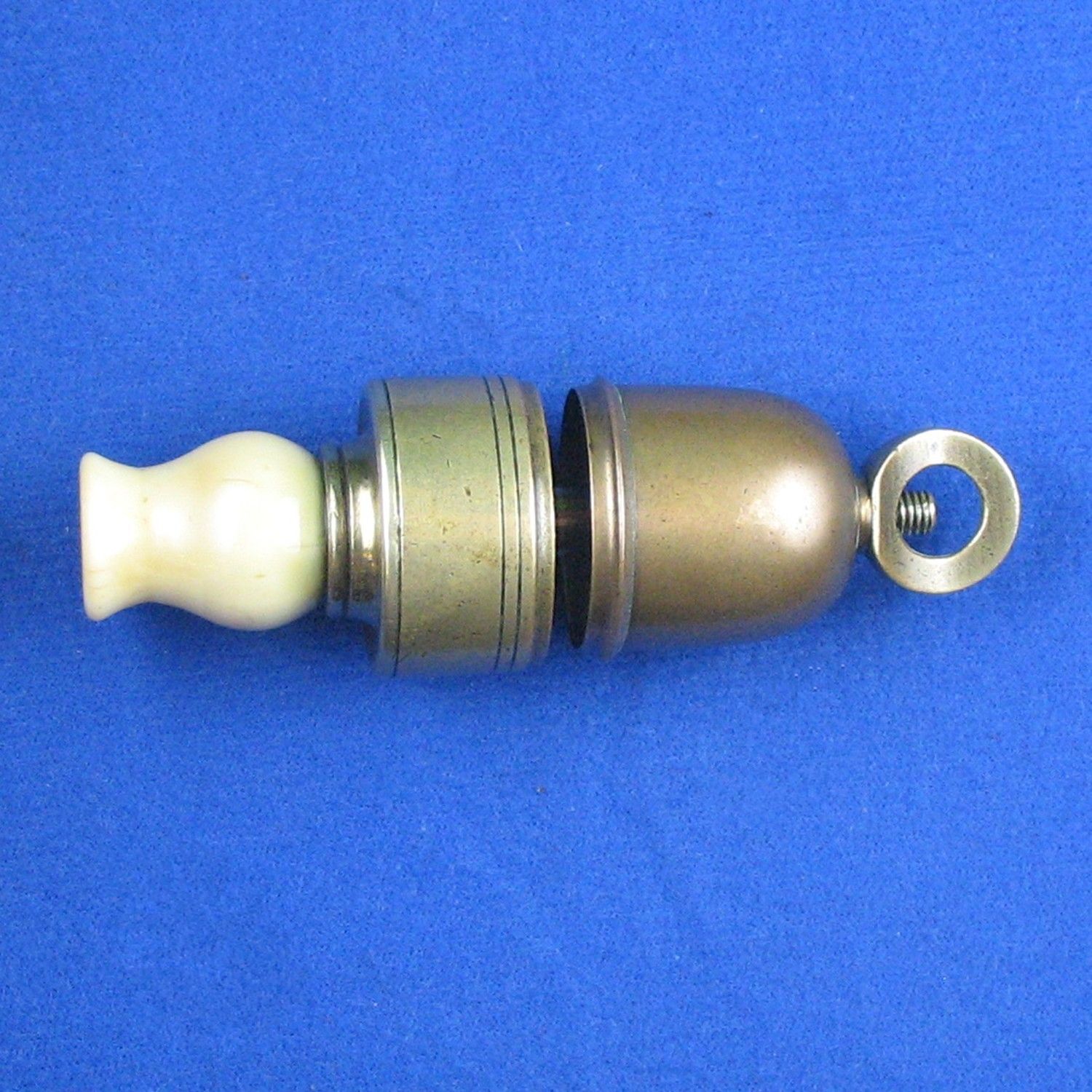
Note the window circles the entire whistle, the support being in the center
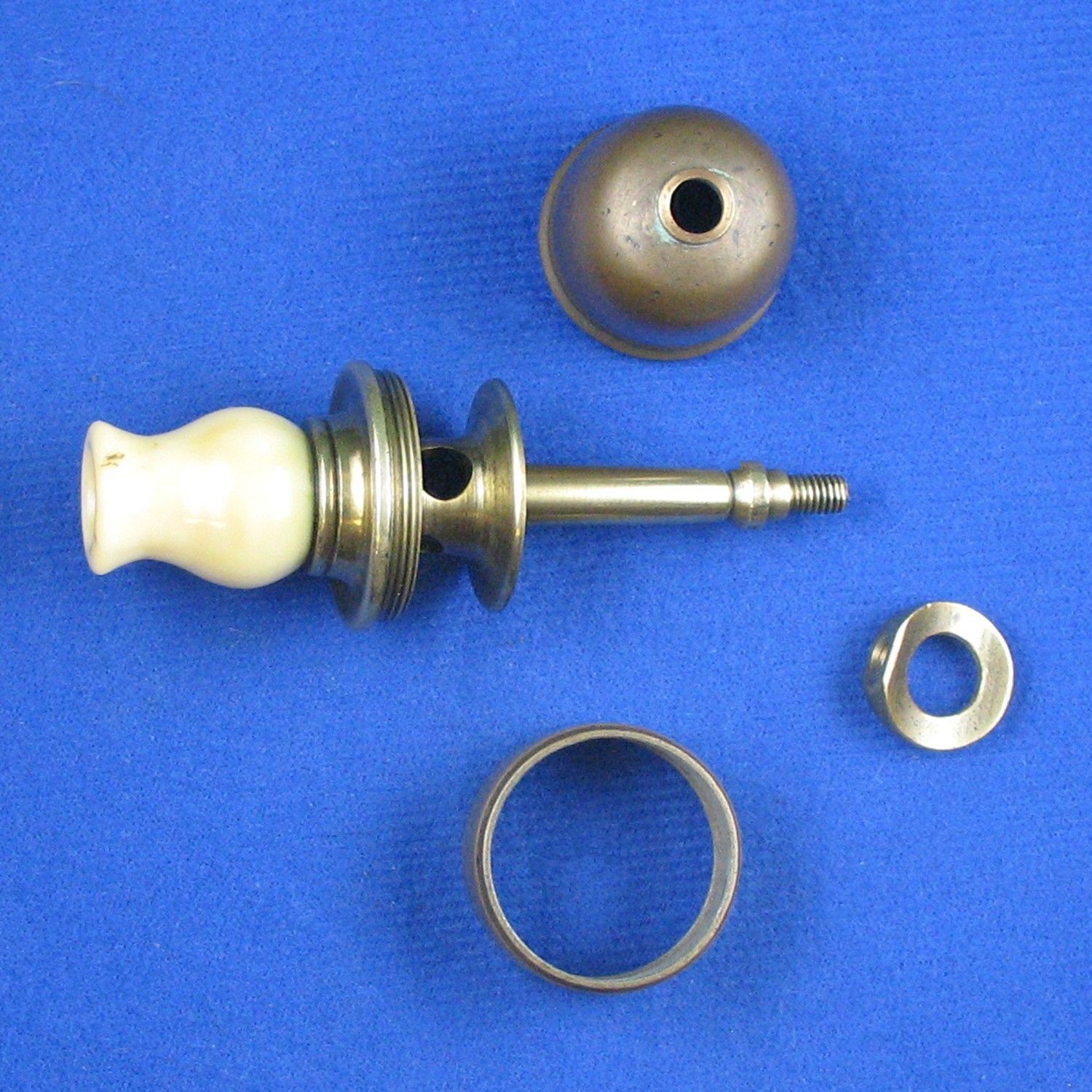
Here you can see the diffusing holes for air around the perimeter of the ‘disc’.
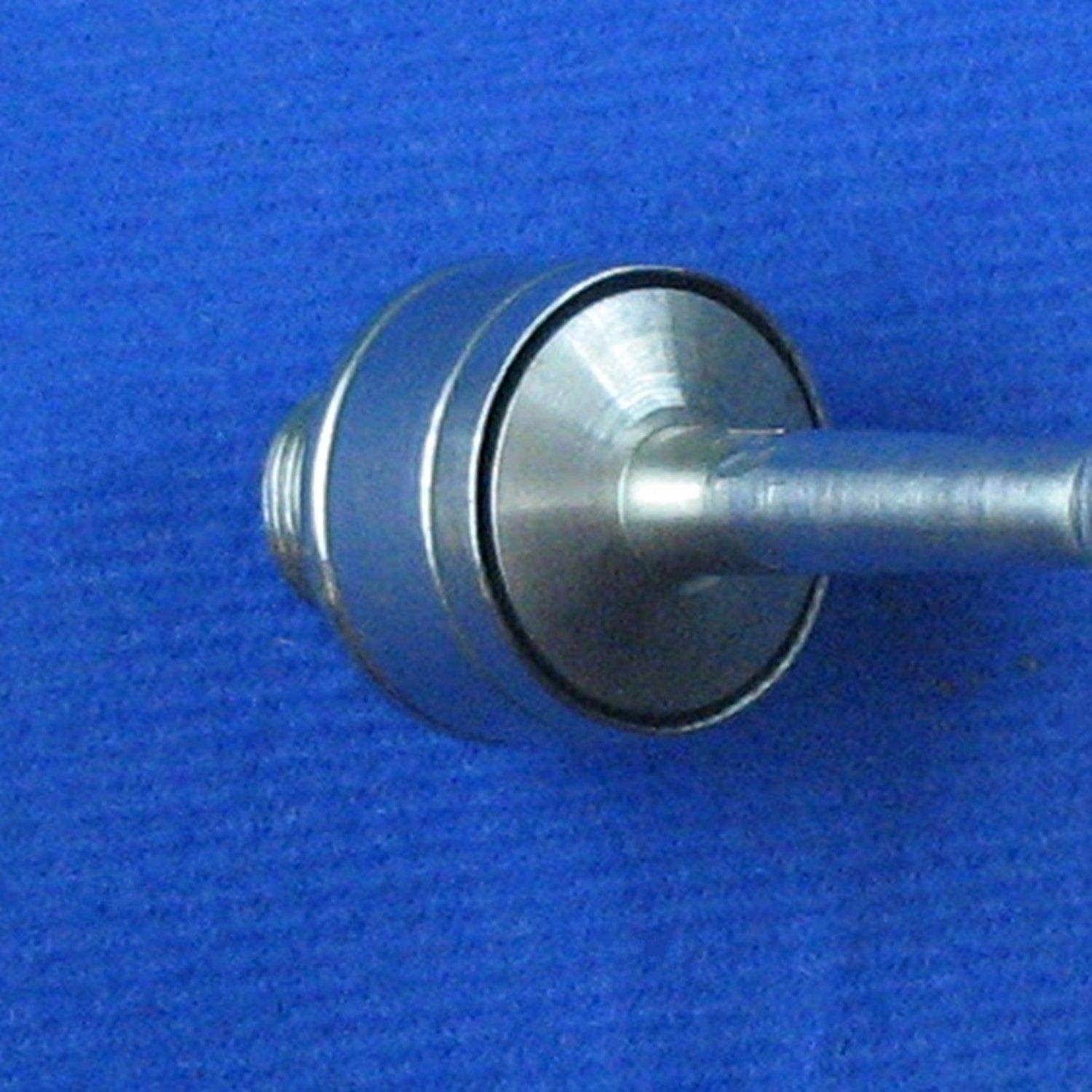
A top view of where the air will exit before striking the edge of the Bell.
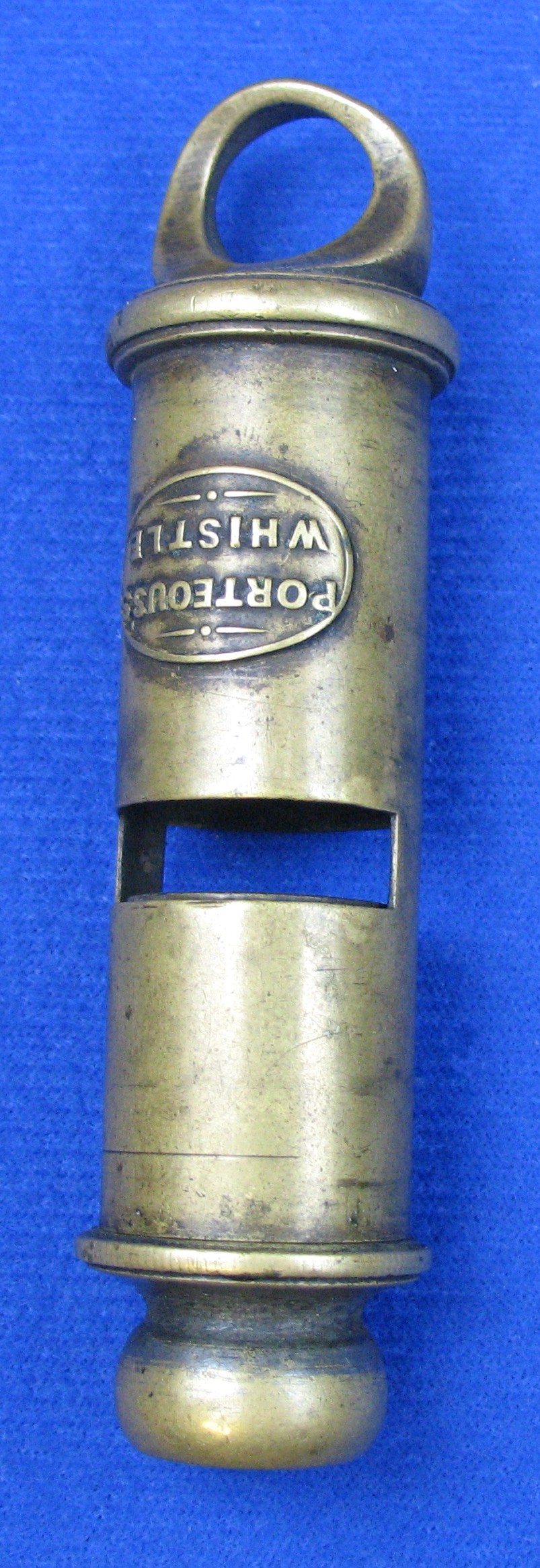
Porteous single note without partition almost full window use
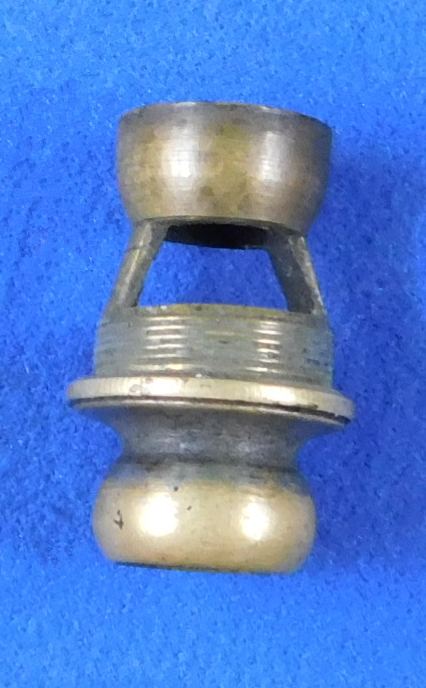
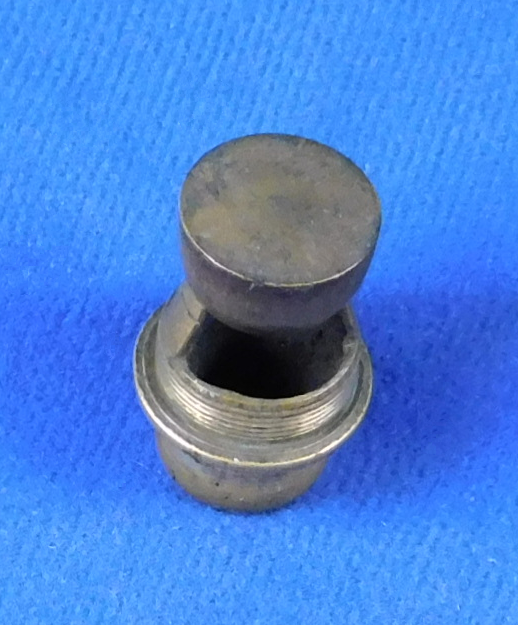
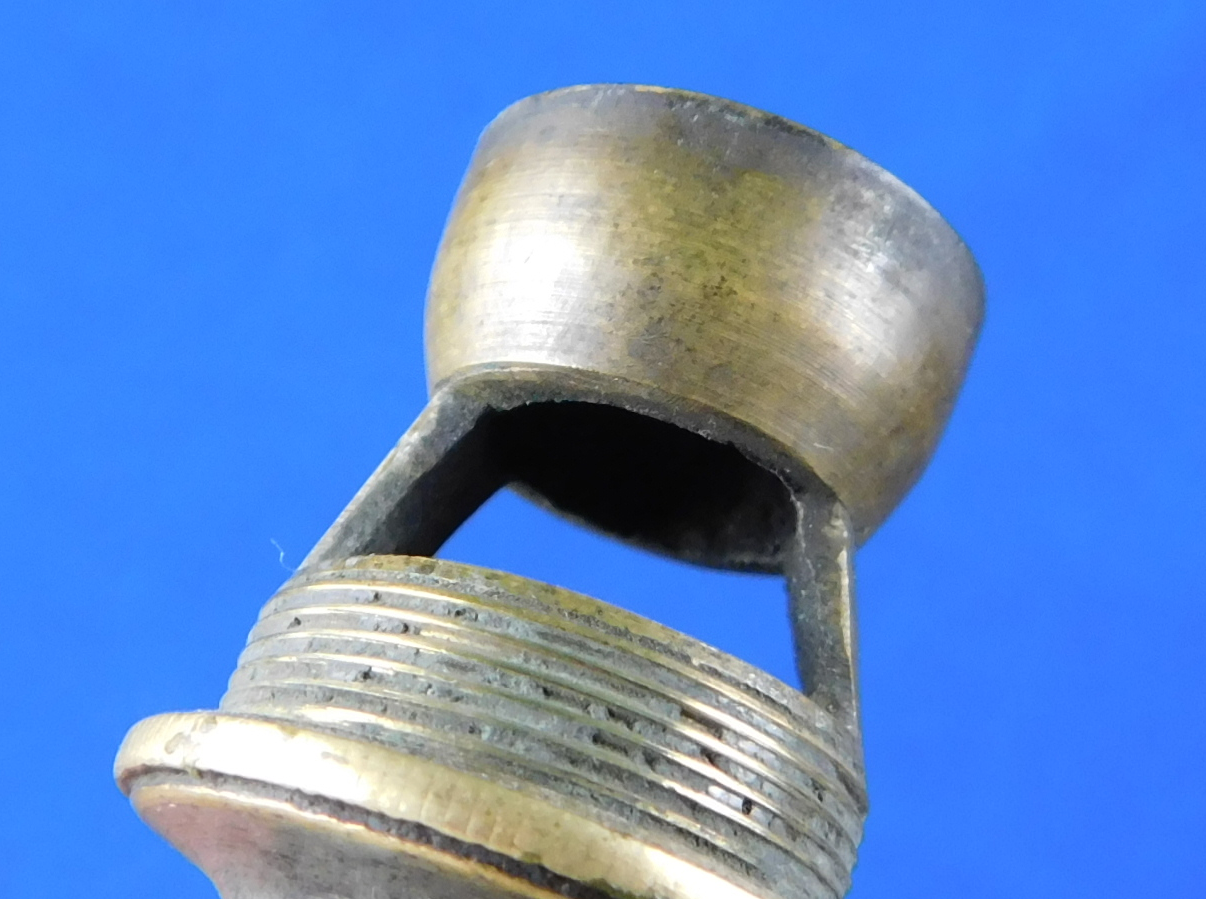
Air would encircle the disc before leaving, but still inhibited at two points
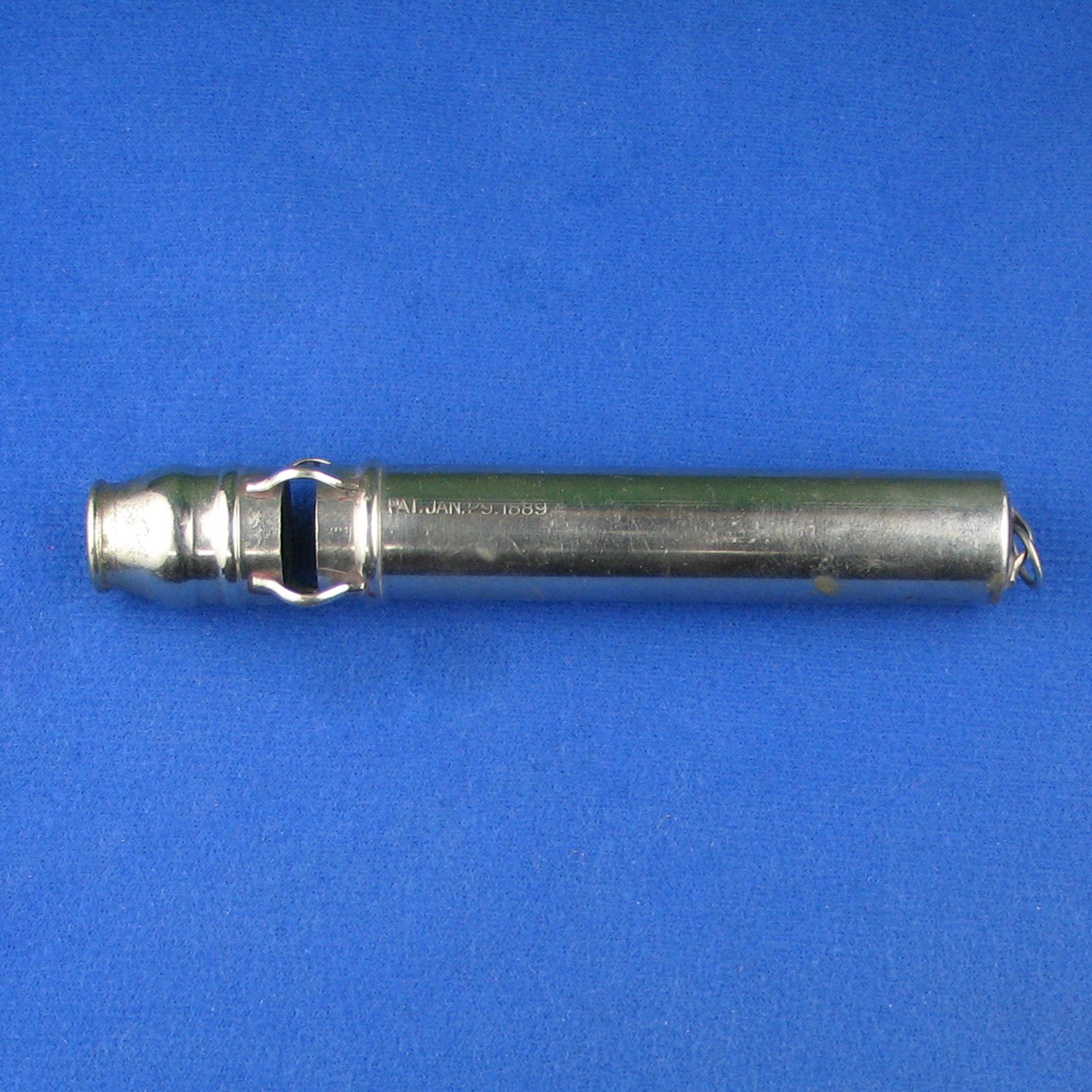
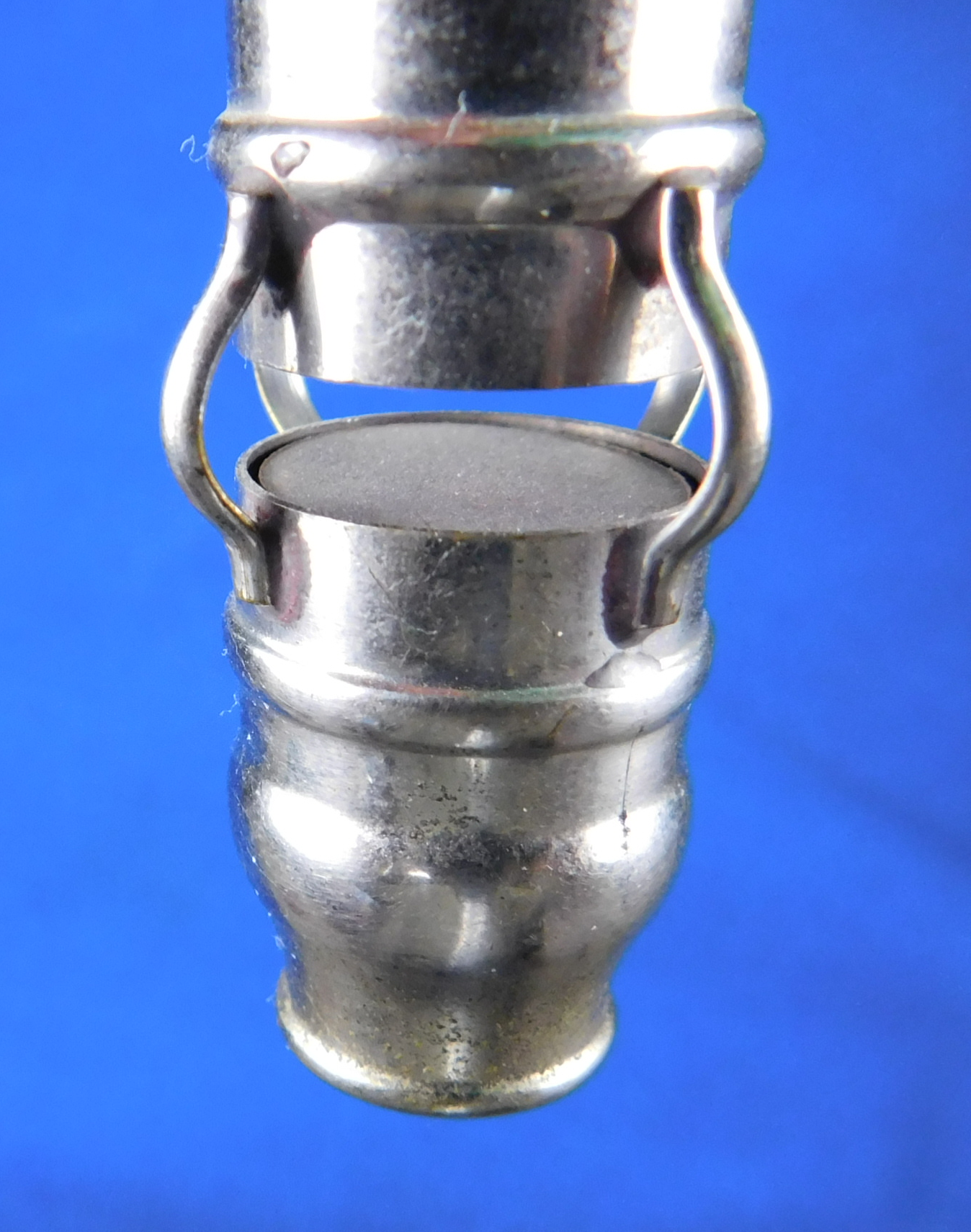
An almost clean cutting edge for the escaping air flow.
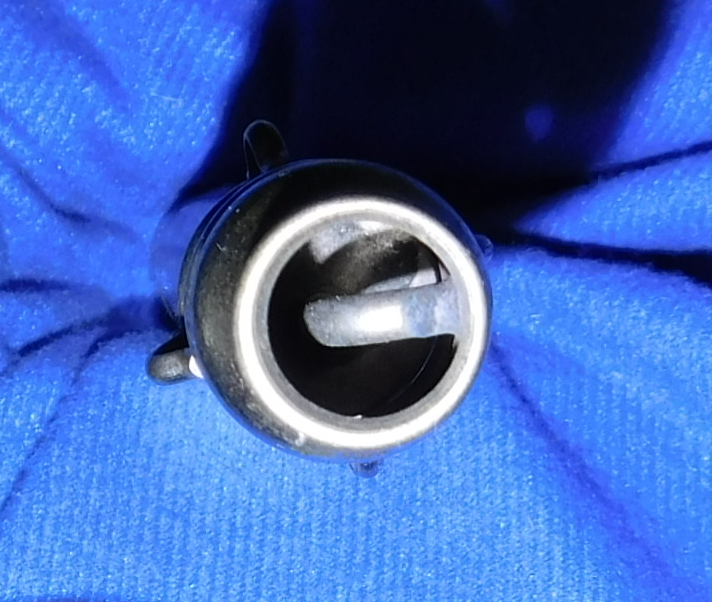
Inside mouthpiece has a 90 degree rod inhibiting the air flow, but exits circumferentially.

An unknown maker achieves a 360.
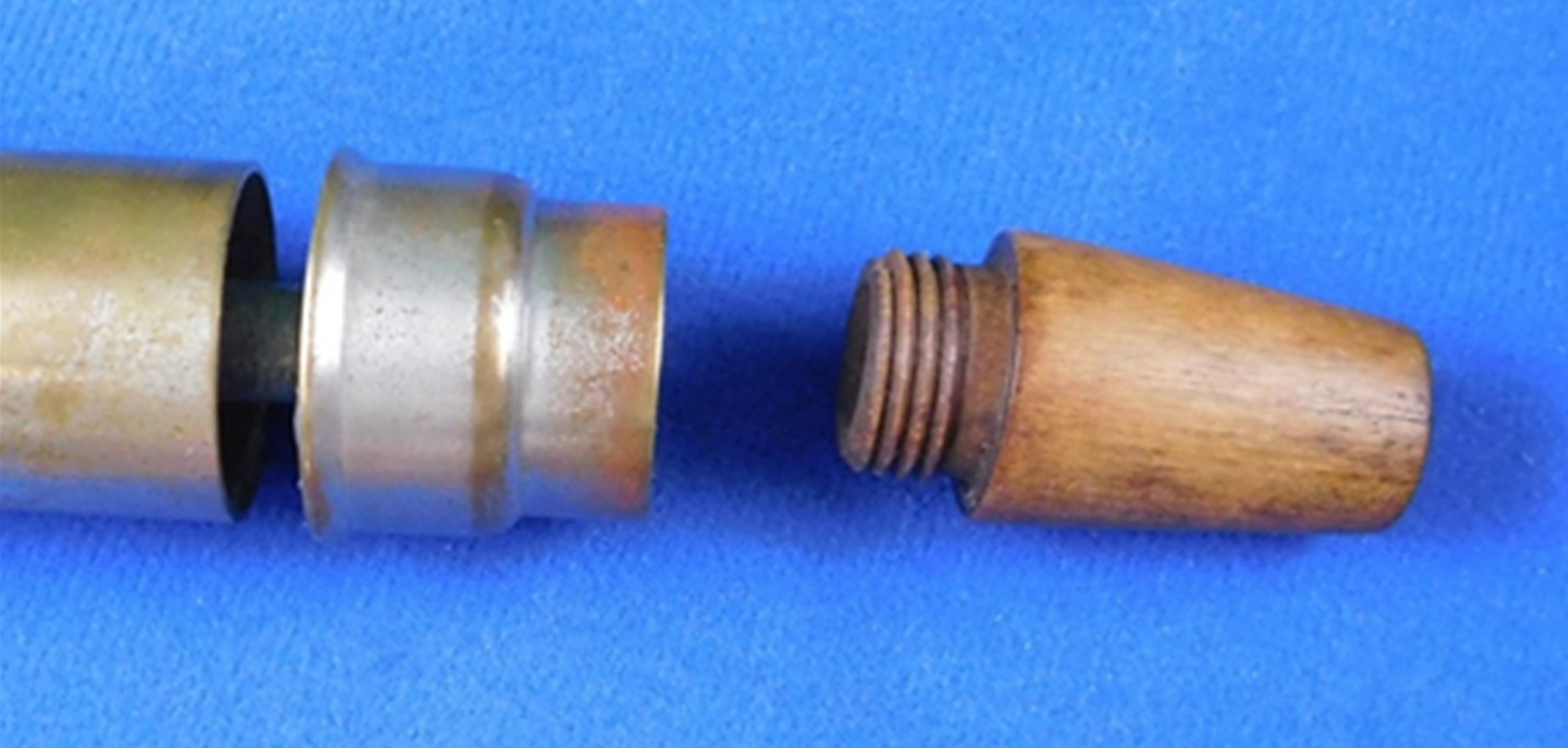
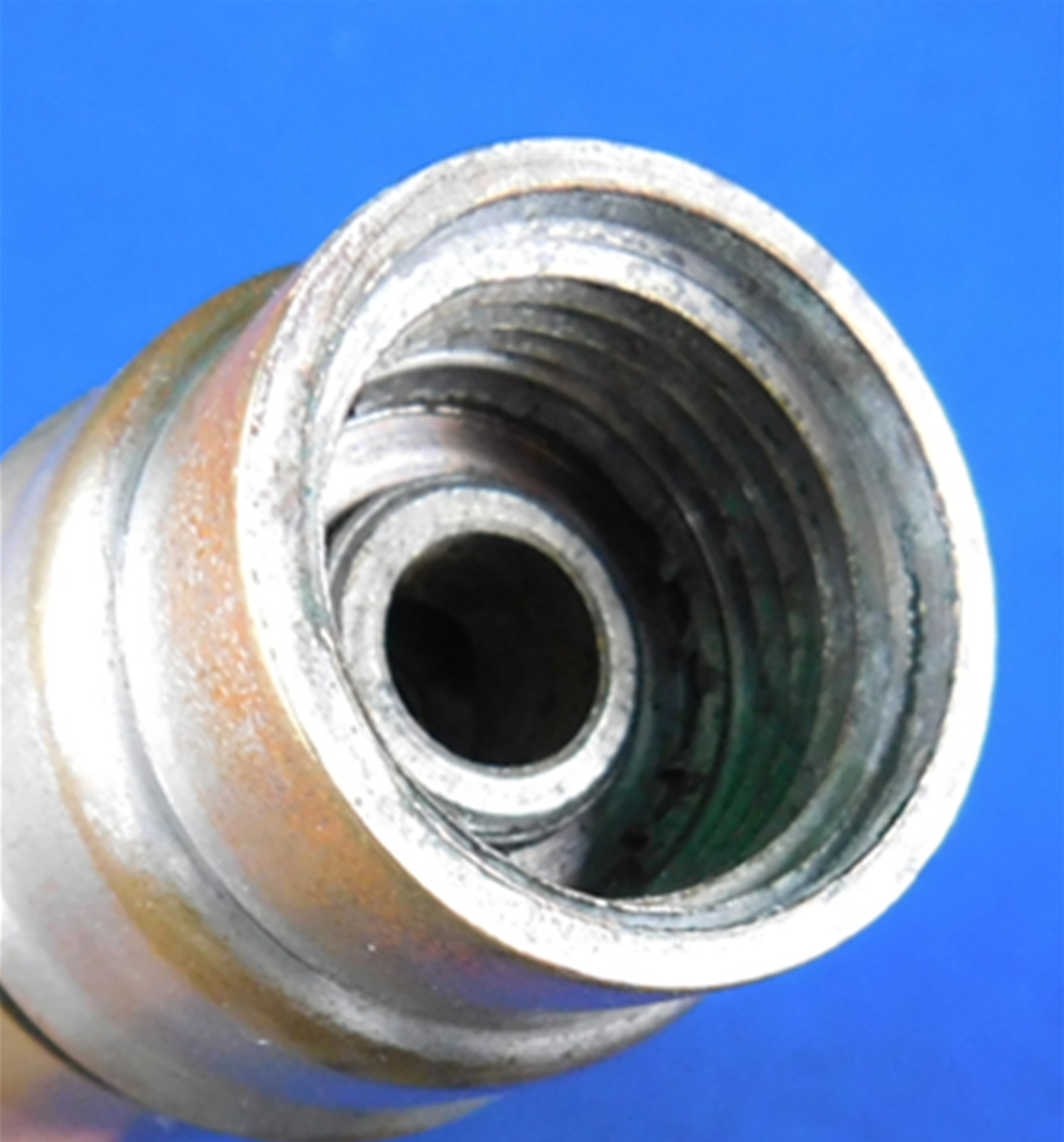
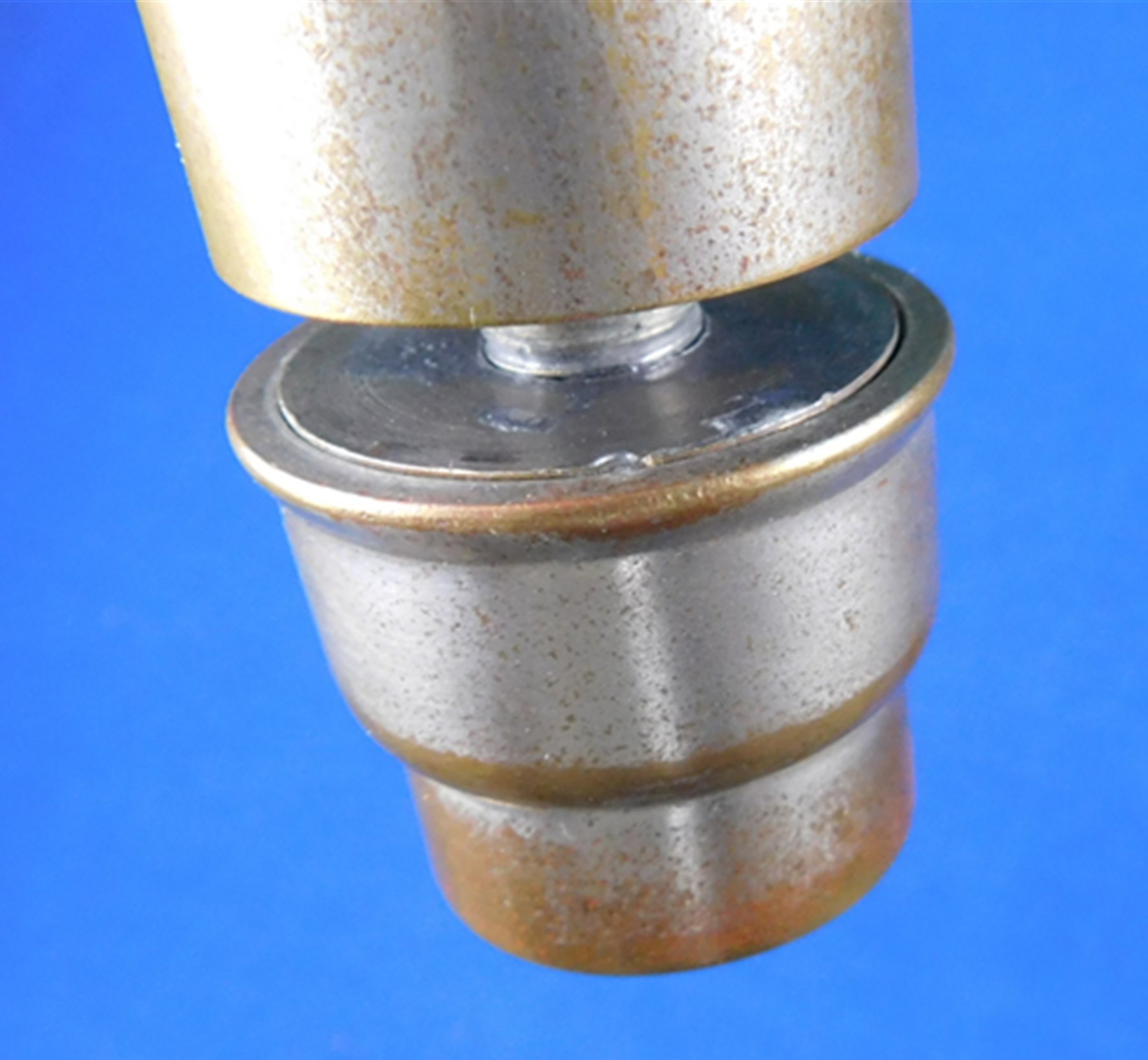
Full clean edge leaving the diffuser and cutting the perimeter fully 360 degrees. Circa post 1900.
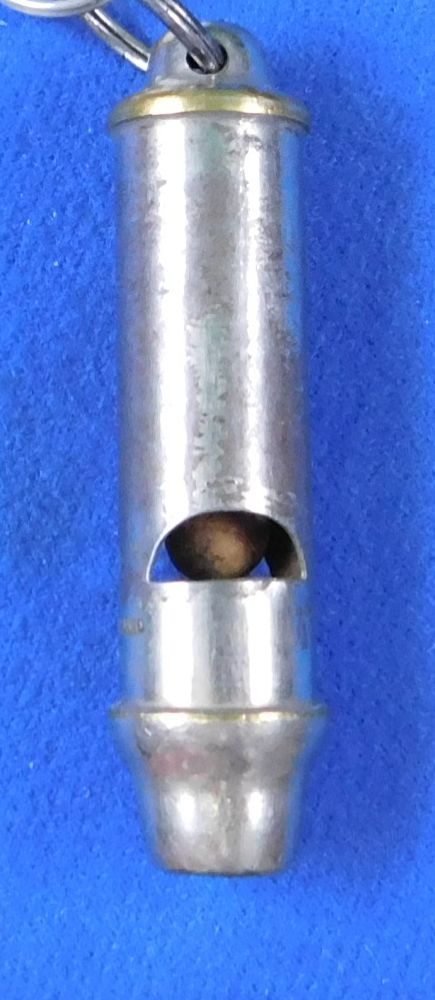
Emca series circa 1930s , by Hudson, no partition.
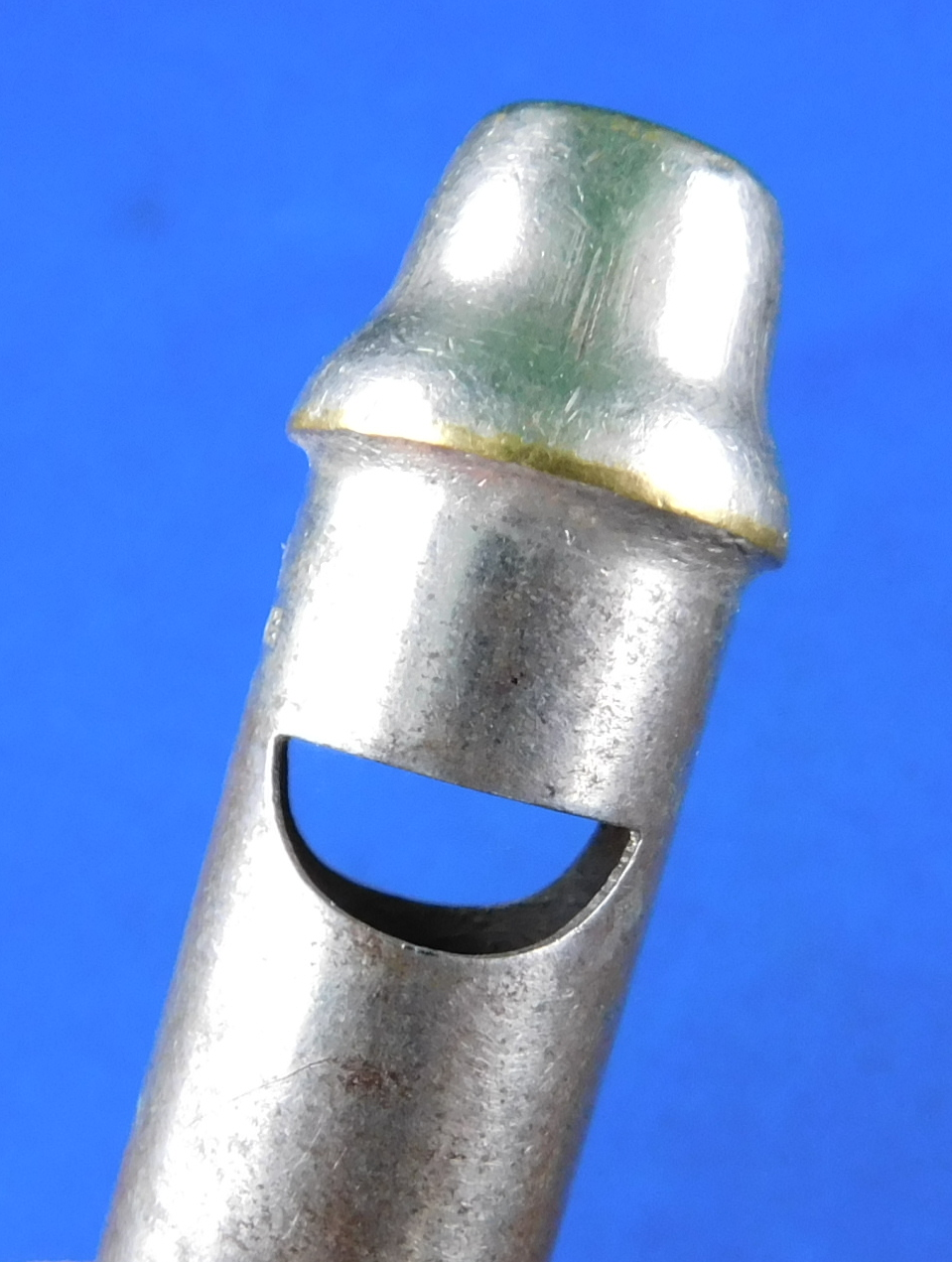

Disc ( diffuser) restricting the air flow to half the window.
Conclusions:
The simple whistle, is not just a simple whistle. Along with collecting and studying makers, uses, stamps, there is design. Beyond that there is logically sound quality and physics.
Bibliography:
The Whistle Gallery website
Collecting Police Whistles by Gilchrist and Topman
End Correction at a Flue Pipe Mouth by Johan Liljencrants
How does a Steam Whistle Work? Lou Bloomfield 1997 Violins and Pipe Organs
TWG
Posted June 5, 2020
